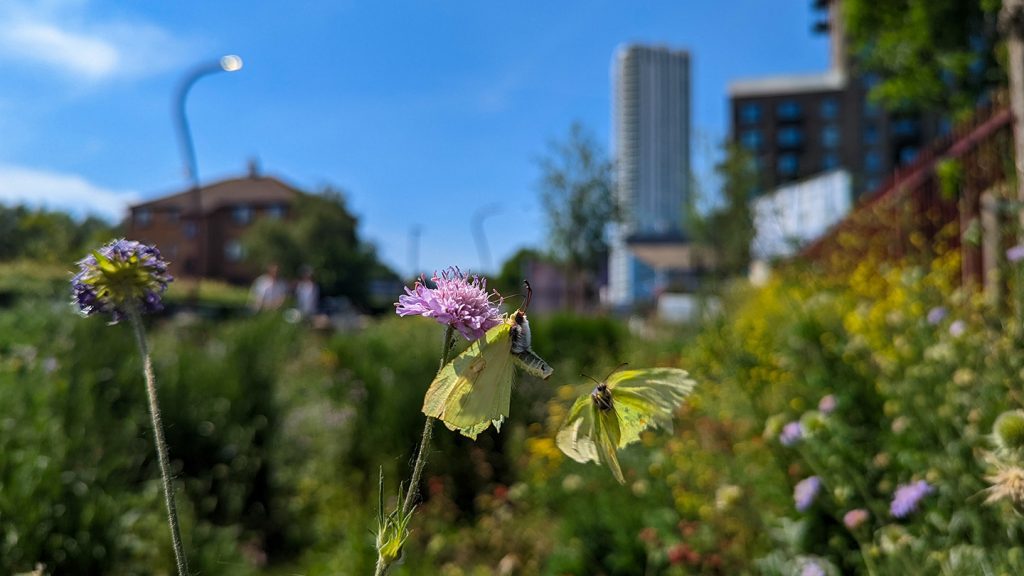Making the world safer for butterflies can be as simple as doing a bit of nothing.
Allowing a portion of your yard to grow without mowing can increase the number of butterflies and moths in that area, according to ecologist Richard Fox. This uncut grass area can be as complex as a full native meadow with flowers, or as simple as a corner that is not mowed near the back fence. While nectar-rich flowers that attract butterflies may appear, the greatest benefit comes when caterpillars are not constantly being cut by the lawn mower. It's not about having special types of grass, but rather about resisting the urge to tidy up everything.
Enthusiasts have been refraining from mowing for years, and there is even a trend called no-mow May that aims to provide safe havens for pollinators. However, Fox, from the nonprofit Butterfly Conservation in East Lulworth, England, was not aware of any scientific studies on the usage of these refuges by butterflies. To address this, he and ecological statistician Lisbeth Hordley analyzed six years of citizen science data from their organization's Great Butterfly Survey. They discovered sufficient data from about 600 yards spread across England, Scotland, and Wales.
According to their study, the neighborhood has an impact. In a yard surrounded by other houses, allowing the grass to grow longer could potentially increase the number of butterflies by as much as 18 percent, as suggested by the statistical model developed with real butterfly data. For yards entirely surrounded by farms, the increase could be as large as 93 percent, Hordley and Fox report in the June 15th issue of Science of the Total Environment. Even if individual yards do not experience a significant increase in butterfly numbers, the total area of safe space could accumulate if many yards were left somewhat untamed. The study also points out that leaving a portion of the yard unmown could be particularly beneficial for moths, as their caterpillars are more likely to feed on grass than butterfly larvae. Moths, which are more numerous than butterflies and typically fly at night, play a crucial role in the ecosystem. According to Fox, they support food chains for many of the garden's birds, small mammals, and bats.Matthew Shepherd of the Xerces Society for Invertebrate Conservation agrees that leaving some yard unmown would likely benefit U.S. butterflies (and moths) as well. In the United States, there are butterfly species with grass-eating caterpillars, such as the grass skipper and the common ringlet. The study highlights a diet that is often overlooked, whether for butterflies or moths. According to Shepherd, gardeners usually think about plants and nectar when creating butterfly gardens, which is beneficial, but does not support all stages of insect life. Nectar primarily serves as adult food, whereas caterpillars require food in their infancy.Allowing patches of grass to grow can attract adult butterflies and moths with nectar, while also providing lawn mower-free habitats for young caterpillars.
While the surveys focused on butterflies, the practice could be even more beneficial for moths; their caterpillars are more likely than butterfly larvae to munch on grass. Moths, which far outnumber butterflies and tend to be night-flying, are a “key cog in the ecosystem,” Fox says. “They’re propping up food chains for many of our garden birds, many small mammals, bats of course.”
Leaving a swath of yard unmown probably would help U.S. butterflies (and moths) too, says Matthew Shepherd of the Xerces Society for Invertebrate Conservation in Portland, Ore. The United States does have some butterfly species with grass-eating caterpillars, such as the grass skipper and the common ringlet.
Whether for butterflies or moths, the study highlights an underappreciated diet. “So often gardeners think about plants and nectar” when planting butterfly gardens, Shepherd says. “That’s great, but it’s not supporting all the life stages of insects.” Often nectar is a grownup food. What caterpillars need is baby food.



